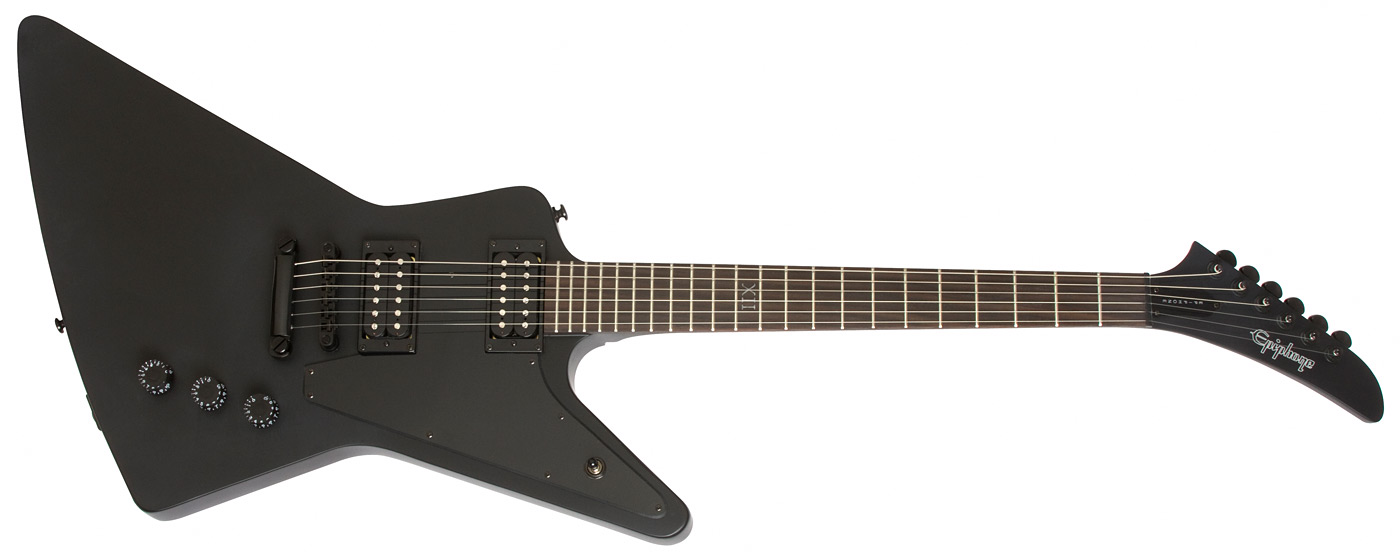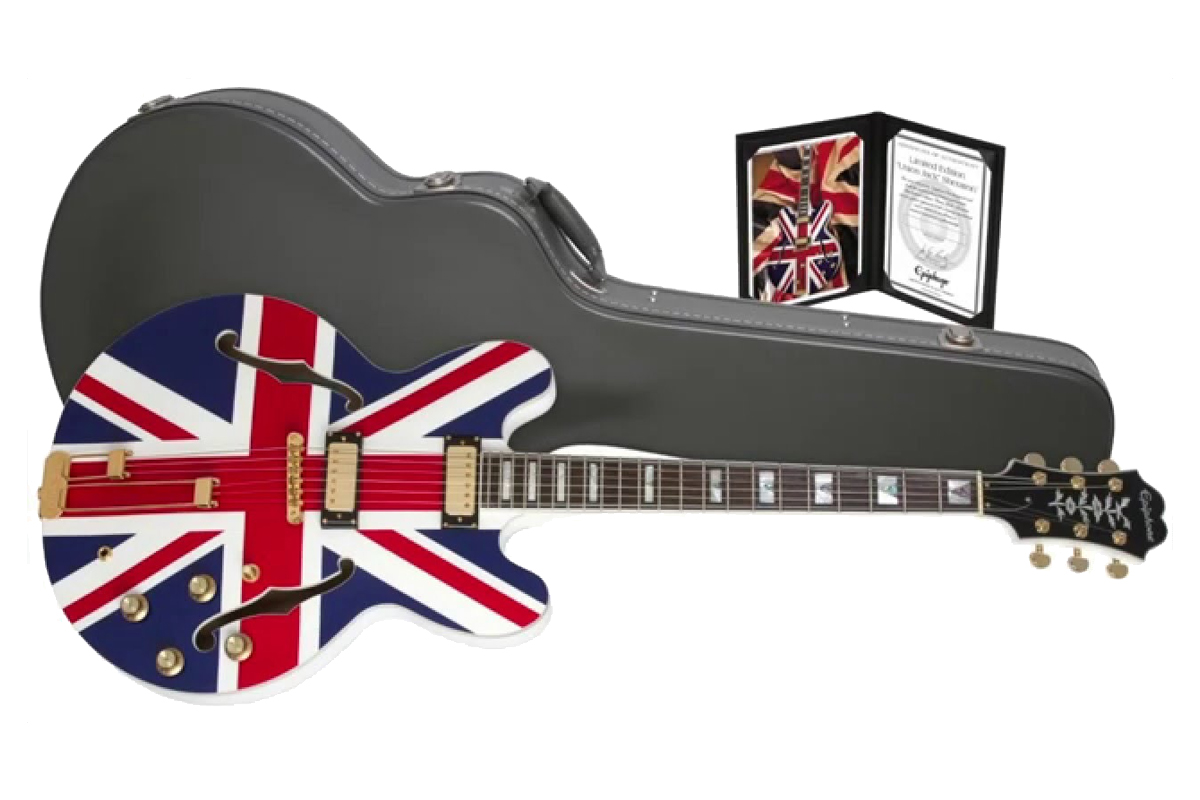Epiphone Goth ’58 Explorer
The Goth ’58 Explorer puts a new twist on a vintage favorite with a Pitch Black color finish to become the dark knight of Epiphone’s Goth collection. With its angular, asymmetrical body and pointed headstock, the legendary Explorer was light years ahead of its time when it was first introduced in 1958. In fact, the Explorer was such a radical departure that only around 100 of the famed instruments were produced at the legendary Kalamazoo factory. What few originals remain are now highly prized collectibles selling for $500,000. Now, Epiphone brings back the one-of-a-kind legend with a whole new look.
The Goth ’58 Explorer features a mahogany body using the same dimensions as the original. The Goth ’58 includes a glued hand-set mahogany neck with a 24.75” scale, a SlimTaper™ profile. The fretboard as a 12” radius, a 1.68” nut and features a pearloid ‘XII’ fret marker at the 12th fret.
PICKUPS
The power of the Goth ’58 comes from their Alnico Classic™ humbuckers, which have all the subtle tonal colors and demonic growl found in original PAF humbuckers.
HARWARE
Like all Epiphones, the Goth ’58 comes with all-metal hardware made to last a lifetime. Along with premium die-cast tuners, the Goth ’58 includes their LockTone™ Tune-O-Matic StopBar bridge. The Goth ’58 also features full function volume knobs for each pickup and a master tone knob, all using full-size 500K O potentiometers.
SPECIFICATIONS
| Body: | Mahogany |
| Neck type: | SlimTaper™ “D” profile Mahogany |
| Fretboard: | Rosewood |
| Frets: | 22 |
| Tuners: | Premium die-cast |
| Bridge: | LockTone™ Tune-O-Matic |
| Neck pickup: | Alnico Classic™ humbucker |
| Bridge pickup: | Alnico Classic™ humbucker |
| Pickup switch: | 3-way switch |
| Controls: | 2x Volume, 1x Tone |
| Strings: | 6 strings |
| Color: | Pitch Black |
| Price: | $499 |
ABOUT EPIPHONE
Epiphone is one of American’s oldest and most revered instrument makers. Since 1873, Epiphone has made instruments for every style of popular music and celebrated its 140th anniversary in 2013. The story of Epiphone begins in the mountains of Greece and threads its way to Turkey, across the Atlantic to the immigrant gateway of Ellis Island, and into the nightclubs, recording studios, and coast-to-coast radio broadcasts of Manhattan in the 1920s and 30s. www.epiphone.com






